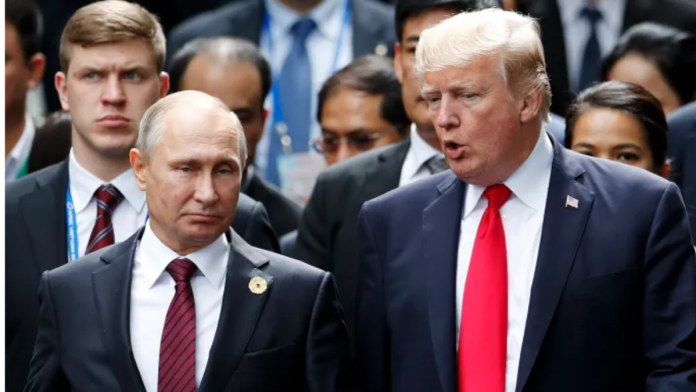As winter arrives, the war between Russia and Ukraine has shifted from snowy battlefields to power plants, gas lines, and oil refineries. Both countries are now targeting each other’s energy systems to gain an upper hand in a conflict that has lasted nearly four years. Analysts say this “energy war” could be more effective than diplomacy in pressuring each side.
Recently, the United States and Europe imposed sweeping sanctions on Russia’s oil industry. These measures target the country’s two largest oil companies, cutting them off from major parts of the global financial system. The move is aimed at reducing Russia’s ability to fund its military, as oil profits generate hundreds of millions of dollars daily for the Kremlin.
At the same time, Ukraine has been launching drone and missile strikes on Russian refineries. These attacks have damaged roughly 20 per cent of Russia’s oil refining capacity. As a result, several Russian regions are facing gasoline shortages. Ukraine says these strikes are meant to put pressure on ordinary Russians and weaken support for the war.
The battle over energy isn’t one-sided. Russia continues to attack Ukrainian electricity and gas infrastructure. These strikes aim to create power outages and heating shortages, particularly as freezing temperatures arrive. Experts say the goal is to disrupt daily life, reduce morale, and slow down economic activity in Ukraine.
Shocking: US targets Russia’s top oil companies with sweeping sanctions
Sanctions as a Strategic Weapon
The latest U.S. sanctions are the Trump administration’s first major steps against Russia after months of threats. They are designed to target the heart of Russia’s economy, which could make it more difficult for the Kremlin to buy equipment, pay soldiers, and maintain its war effort. Analysts note that the sanctions could also prompt major oil buyers, like India, to reduce imports, further limiting Russia’s revenue.
Ukraine Faces Energy Shortages and Civil Impact
Meanwhile, Ukraine has continued using long-range missiles to strike critical targets in Russia, including plants producing explosives and rocket fuel. These attacks rely on Western intelligence support, including satellite guidance, signalling international backing for Ukraine’s energy-focused strategy.
Russia’s counterattacks have already forced Ukraine to introduce emergency blackouts in several cities. In Chernihiv, a city of 270,000 people, total blackouts have halted public transport and disrupted water supplies, highlighting the severe impact of energy strikes on civilian life. Ukrainian authorities have also been forced to delay the start of centralised heating in residential buildings due to gas shortages.
Industrial activity is being affected as well. Factories are at risk of closing, and electricity costs are rising. Energy shortages could even increase migration as families struggle to stay warm, putting further strain on Ukraine’s economy. European countries have started assisting, but funding remains limited. Ukraine aims to import around four billion cubic meters of gas for $2 billion to prepare for the winter months.
Devastating sanctions hit Colombia’s president Petro as US criticizes drug trafficking approach
Economic Pressure Meets Warfront Tactics
The clash over energy highlights the growing importance of economic and infrastructure targets in modern warfare. The United States’ sanctions against Russia, combined with Ukraine’s long-range strikes, show how both sides are using economic tools alongside traditional military action.
Russia has demonstrated the ability to endure sanctions by relying on trade with countries like China and India and by finding alternative ways to move oil despite restrictions. However, experts warn that cutting off Russia’s main oil producers could reduce the country’s financial capacity to sustain prolonged military operations.
Ukraine’s attacks on Russian energy assets also extend to its military-industrial complex, affecting the production of explosives and rocket fuel. This strategy aims to reduce Russia’s ability to carry out future attacks while increasing pressure on Moscow to negotiate over energy targets.
The energy front now dominates the conflict as winter sets in. While ground battles slow due to harsh weather, electricity outages, gas shortages, and oil disruptions are shaping the daily lives of civilians and the war strategies of both nations. The conflict shows how energy infrastructure has become a crucial battlefield, forcing each side to adapt its tactics in ways that directly impact millions of ordinary people.


